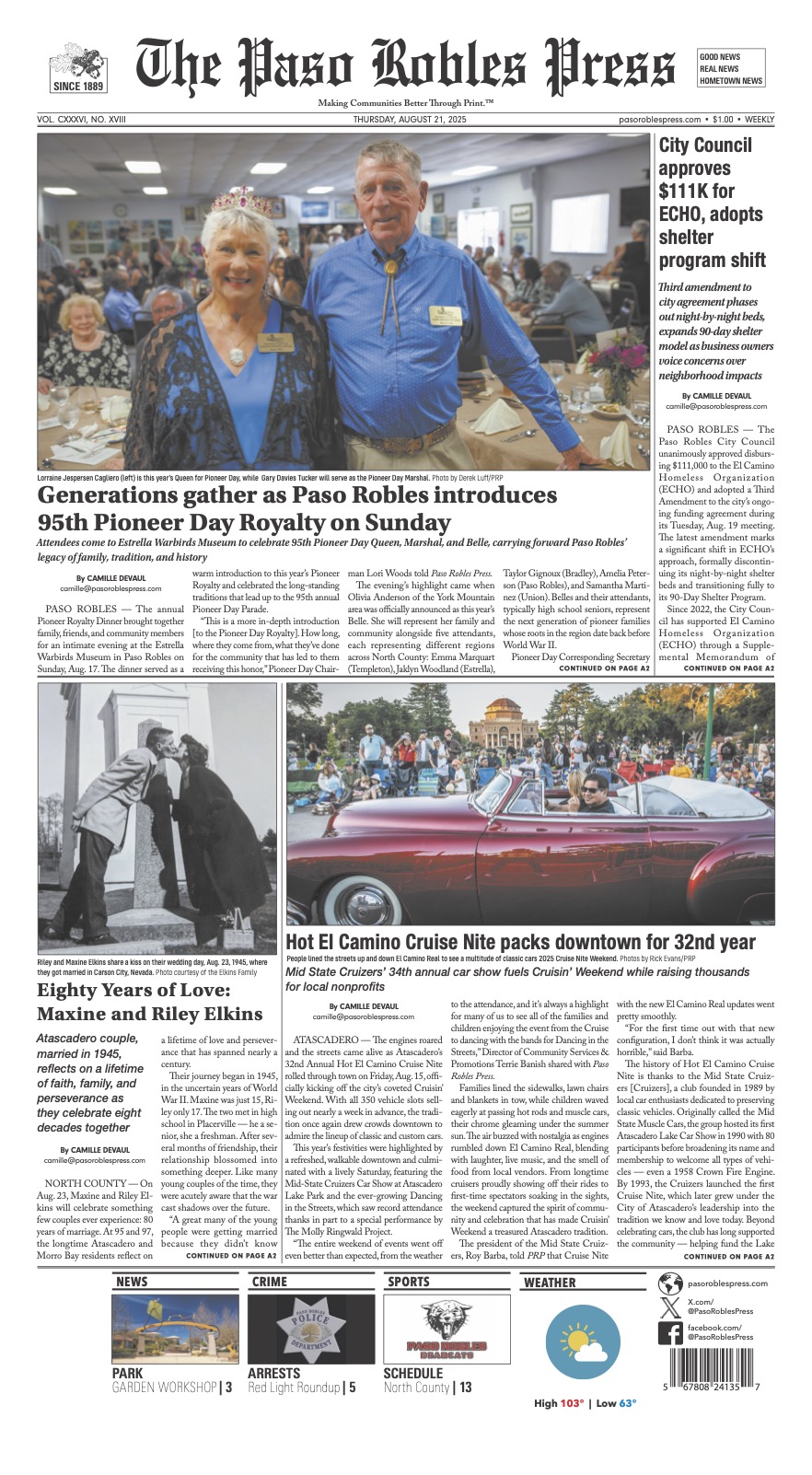Imagine needing a tow truck for your disabled vehicle out in the middle of nowhere. Now imagine this same scenario while under enemy fire. Field combat, enemy suppression, tactical decision-making, drone reconnaissance, air assault, and medivac capabilities were all part of a full-scale training operation held recently at Camp Roberts and Fort Hunter Liggett. From July 21 to August 12, the Army National Guard eXportable Combat Training Capability (XCTC) program conducted exercises to certify platoon proficiency.
The 41st Infantry Brigade Combat Team (IBCT), headquartered in Oregon, coordinated the exercises in cooperation with First Army personnel. The training enabled soldiers to remain closer to civilian jobs and homes while honing skills for ongoing instruction and potential deployment while receiving oversight, coaching, mentorship and evaluation.
Over 2,400 soldiers from more than ten units convoyed from California, Oregon, Washington, and New Mexico for the instrumented brigade field operation. They included: 1-186th Infantry (OR); 1-200th Infantry (NM); 1-303rd Cavalry (WA); 2-162nd Infantry (OR); 2-218th Field Artillery (OR); 741st Brigade Engineer Battalion (OR); 141st Brigade Support Battalion (OR); 189th Combined Arms Training Brigade (WA); 1-140th Assault Helicopter Battalion (CA).
“The training objective for XCTC was to provide lethal combat platoons,” said Col. Eric Riley, commander of the 41st ICBT. “We are working at company, battalion and brigade levels through multi echelons to hone our battle skills throughout our area of responsibility.”
Both posts were utilized to accommodate the size of the combined units, “push our logistical efforts, stretch them beyond their capabilities at times, and push our communications to the max,” said Col. Riley.
“Observer Controllers provided checks-and-balances to rate how well our units, all outfitted with sensors, had performed,” said Maj. W. Chris Clyne, Public Affairs Officer, 41st IBCT.
Among their challenges that tested both stamina and morale were full-gear maneuvers in brutal temperatures that soared to 110 degrees.
“All our soldiers performed at or above expectations in a climate they were not used to,” said Lt. Cameron Sparks, S1,741st Brigade Engineer Battalion.
“It’s been an opportunity to really dig deep, individually and collectively,” said Col. Riley. “I look forward to where this brigade is going in the future. We’ve done great here and I only see amazing things for the brigade as we go forward.”

Photo by Maj. W. Chris Clyne, 41st IBCT Public Affairs
Adjutant General praises UAV detachment
Former Templeton grad, two soldiers commended
At Camp Roberts, three Army National Guard soldiers from the Tactical Unmanned Aerial Systems (TUAS) detachment of the 741st Brigade Engineer Battalion in Oregon were recognized for performing an emergency landing of an RQ-7B Shadow Unmanned Aerial Vehicle (UAV), valued at approximately $1.2 million. An engine malfunction occurred shortly after takeoff during an Army eXportable (XCTC) Combat Training Capability exercise.
Adjutant General Michael Stencel, commander of both the air and land components of the Oregon National Guard, awarded challenge coins to three National Guard specialists – Spc. Sean Chavez (aircraft operator), formerly of Templeton, Spc. Ammarae Broncheau (payload operator), and Spc. Zachariah Kellogg (crew chief). The trio was guided by Unmanned Aerial Systems instructors Sgt. Michael Avery and Staff Sgt. Sean Fuqua.
“We overcame issues with equipment, weather, and airspace and split our crew into day and night shifts,” said Spc. Chavez. “We worked cohesively and flew well past our shoot-for-the-moon goal to accrue 206.6 flight hours in just three weeks.
“The big thing for this exercise was unit integration; it allowed us to fit the different puzzle pieces together,” said Spc. Chavez. “Because we were together at the same time, we got the opportunity to directly communicate and train as one unified brigade, rather than separately at our various home stations, like
we usually do.
“TUAS provided route recon for engineer convoys, overwatch for infantry in defensive positions and hunted for enemy units. We even assisted a field artillery commander in improving concealment techniques by showing an aerial view of his gun placements,” Spc. Chavez explained.
Still a relatively new military occupation, units are learning of benefits that TUAS brings to the table.
“We were able to demonstrate to the brigade leadership how much of a tactical advantage we can provide,” said Spc. Chavez. “As a result, now everyone wants us.”
— Melissa Chavez









